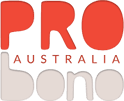Top 10 Tips for Getting Your FBT Right
17 March 2016 at 10:34 am
As 31 March looms it’s time for the often thankless but nevertheless significant task of preparing the Fringe Benefit Tax return. Taxation training organisation,TaxEd, provides its top 10 tips on getting it right along with helpful links to the ATO website.
1. 2015/16 Fringe Benefit Tax (FBT) rates:
It might sound obvious, but the FBT rate, FBT rebate rate, Type 1 and Type 2 gross-up rates and capping thresholds for exempt and rebateable employers have all changed for 2015/16. Make sure you are using the right rates in all calculations, spreadsheets, employee communications etc. Click here to access 2015/16 rates.
2. Work-horse vehicles:
Where potentially FBT exempt “work horse” vehicles have been provided to staff, has private use been limited to home-work travel and other private travel that is minor, infrequent and irregular? If not, no FBT exemption applies. The ATO has recently announced it is considering whether further guidance is needed around what constitutes “minor, infrequent and irregular private use”. This follows recent press raising concerns with compliance issues in this area. There may be some developments in this area coming in 2016/17.
3. Grossing Up issues:
Get your Type 1 and Type 2 benefits correct and apply the appropriate gross-up rate. Type 1 is where a GST input tax credit is available. Type 2 is where no GST input tax credit is available. Watch out for GST on entertainment expenses if you are FBT exempt under section 57A.
4. After tax employee contributions:
Where employees make after-tax contributions towards the fringe benefits they receive, have you:
a. Applied the contribution to reduce the taxable value of benefits to which they relate?
b. Accounted for GST on 1/11th of the contribution if it is made directly by the employee to the employer and where the benefit type is subject to GST (egg use of a car as opposed to a contribution for use of residential premises)?
5. Minimising FBT payable:
a. Cars:
i. Where the “operating cost” method produces a lower FBT liability it should be used. Log books should be completed to allow a comparison of the operating cost method and the statutory formula method. The statutory formula method is the default valuation method in respect of a car fringe benefit unless the employer chooses otherwise.
ii. “after-tax employee contributions” can reduce taxable value and provide a better outcome for employer and employee – have you considered this?
iii. check that cars that have been held for more than four FBT years have had the one-third reduction made to their cost base (if using statutory formula method).
b. Entertainment:
i. What valuation method (“meal entertainment” or actual expenditure) produces the best FBT outcome for your business? Have you compared outcomes? Remember when using the “actual expenditure”’ method the minor benefits and property consumed on employer premises exemption (click here) are available (except for tax exempt employers).
ii. Have you correctly identified what is entertainment as regards:
- Sustenance v. entertainment
- Working meetings v. entertainment
- Entertainment exemptions that may apply
c. Car Parking Fringe Benefits:
i. Have you correctly determined whether a commercial car park exists within a 1 km radius of the entrance of the car park where you provide employee parking where the lowest all day parking rate at such car park exceeds the $8.37 2015/16 car parking threshold? In particular, have you computed the lowest all day parking rate by identifying whether any periodic car parking rates (i.e.annual car parking fees) are above the threshold once you divide by business days?
ii. Have you used the most favourable valuation approach to determining how many car parking fringe benefits you have and the valuation thereof? The 12 week register method may most accurately determine how many benefits exist.
iii. Have you taken advantage of exemptions?
6. Reportable Fringe Benefits:
Where an employee has received fringe benefits (other than excluded benefits) with an aggregate taxable value of more than $2,000 for the FBT year the grossed up amount must be reported on the employee’s Payment Summary (note: the Type 2 gross up rate applies). Certain employers (section 57A exempt employers and section 58 employers) are required to include “quasi” fringe benefits as Reportable Fringe Benefits – these benefits are exempt from FBT but still reportable.
7. What value to use?
Make sure when determining taxable value of fringe benefits provided that the GST-inclusive cost (where applicable) of providing the benefit is always used.
8. In-house benefits:
If providing “in-house” benefits, have you applied your $1,000 per employee reduction?
9. Declarations:
Obtain all necessary FBT declarations from employees before lodgement of the FBT return to support positions taken such as things like “otherwise deductible” amounts, LAFHA and remote area concessions etc.
10. FBT changes coming for 2016/17?
a. Changes are effective for the for 2016/7 FBT year:
i. Salary Packaged Meal Entertainment changes:
- Salary packaged meal entertainment ceases to be an excluded fringe benefit for Reportable Fringe Benefits Tax Purposes (i.e. it now counts to determining whether an employee has received more than $2,000 in taxable value of fringe benefits).
- A new $5,000 grossed-up cap exists for meal entertainment provided by section 57A exempt employers and section 65J rebateable employers (note – this is addition to existing caps).
- Certain Valuation methods previously available for salary packaged meal entertainment are discontinued (i.e. 50/50 and 12 week register).
ii. The salary packaged meal entertainment changes are effective 1 April 2016 and apply to the 2016/17 FBT year. The changes are conveniently summarized in the December 2015 TaxEd newsletter article Salary Packaging – Entertainment benefits to be amended.
Check out:
TaxEd FBT training: FBT – Everything you need to know
FBT – Cars: Everything you need to know
FBT – Entertainment: Everything you need to know
This article was prepared by Rob Power and Michael Doran. To learn more go to the TaxEd website www.taxed.com.au







